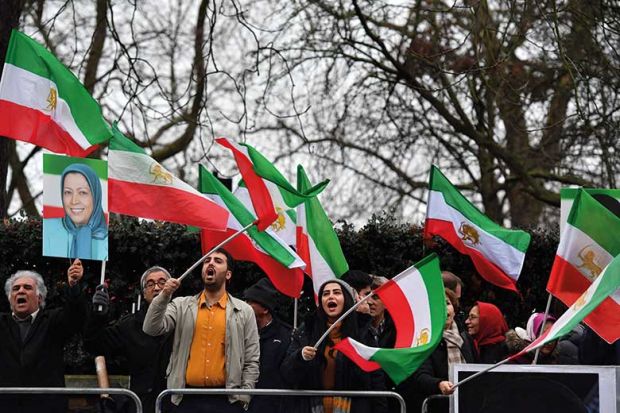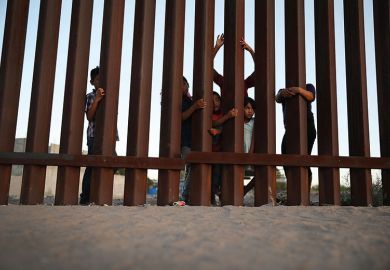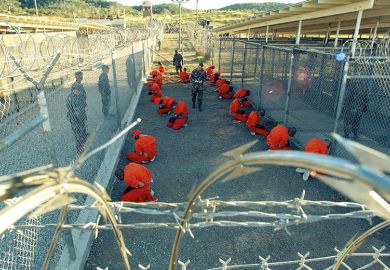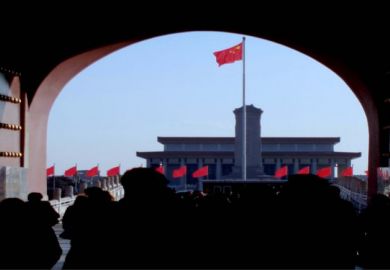It’s the first week of 2019 and dinghies carrying Iranian – and other – refugees are attempting to cross the Channel, this new “wave of illegal migrants” already media pawns in Brexit babble. Meanwhile in Tehran, Nazanin Zaghari-Ratcliffe, the British-Iranian dual national, is on hunger strike together with Narges Mohammadi, a human rights activist also being held in Evin prison. Iran’s politics have always been a heady mix of internal and external forces, and the past 40 post-revolutionary years are no exception.
It is a good time for an overview of the nature and achievements of the Islamic Republic. Amin Saikal’s ambitious but somewhat stolid enterprise covers a lot of ground, examining both the flexible internal policies and pragmatic international relations that marked the republic from its inception. He analyses its four presidencies, explores the diversification of the economy from dependence on oil to services and increasing tax revenues, and describes the defensive and innovative military strategies, which he says account for a comparatively small proportion of national expenditure. He is a good analyst of Iran’s global and regional alliances and conflicts, as befits his essentially realist international relations approach. There’s a lot of data, and his narrative reach is wide-ranging.
Saikal’s main conceptual contribution is to explore the ongoing tension between jihadi (derived from divine power through the Supreme Leader) and ijtihadi (popular, pragmatic) forces in Iranian politics, a coupling insistently repeated throughout the book. He also details the bifurcation of power at the elite level with the rise of the Islamic Revolutionary Guard Corps as a parastatal military body that parallels the formal Artesh (army) but also has tentacles in many parts of the Iranian economy. He touches on Iran’s use of “soft war” as a cultural weapon in the face of Western media representations and as an emergent tactic in the cyber domain.
The oscillation between regime power and public participation, between internal political flexibility and external pressures, remains central to the Islamic Republic’s continuity, but an overly schematic view of politics means that Iran as country, people, culture, disappears. The massive ecological crisis does not feature here. And while “youth” and “human rights” are waved at, no attention is given to the vibrant film industry, digital start-ups, female racing drivers and maths champions. Nor is there any sense that, on a daily basis, Iranians are as creative and contestatory as ever.
In the current chapter of the 40-year stand-off with the US, Donald Trump’s reinstatement of sanctions despite Iran’s keeping to the 2015 Joint Comprehensive Plan of Action is having an impact on banking, shipping, airlines and medical supplies, and the rial has further lost value. Over the winter of 2017-18, thousands of Iranians poured on to the streets as inequality and declining living standards prompted anti-regime protests. The oscillations are getting stronger.
On a more pedantic note, the footnote system is horrible and far too many words are put in quotation marks, as if Saikal were a nervous student wary of the freight of meaning. A university publisher could have provided better editorial support.
Perhaps we will have to wait for another 10 years to fully gain perspective on one of the 20th century’s most important events. Meantime, those men in rubber dinghies might well be trained engineers and doctors, and Iran’s loss is our gain.
Annabelle Sreberny is emeritus professor at the Centre for Global Media and Communications, SOAS, University of London and the author, most recently, of Persian Service: The BBC and British Interests in Iran (2014). Her photographic archive of living though the 1979 revolution in Iran is now available at www.myrevolutionaryyear.com.
Iran Rising: The Survival and Future of the Islamic Republic
By Amin Saikal
Princeton University Press
344pp, £24.00
ISBN 9780691175478
Published 5 February 2019
Register to continue
Why register?
- Registration is free and only takes a moment
- Once registered, you can read 3 articles a month
- Sign up for our newsletter
Subscribe
Or subscribe for unlimited access to:
- Unlimited access to news, views, insights & reviews
- Digital editions
- Digital access to THE’s university and college rankings analysis
Already registered or a current subscriber?








